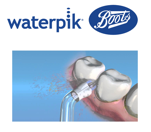Biofilm in healthy and diseased sites – Deborah Lyle
Featured Products Promotional FeaturesPosted by: Dental Design 2nd September 2018

The oral cavity is inhabited by hundreds of species of bacteria that form dental biofilm on all oral surfaces. Biofilm composition varies between healthy and diseased sites and is often associated with caries and periodontitis.[1]These two diseases are among the most prevalent conditions of mankind, impacting negatively on quality of life and causing major tooth loss. Knowledge of the composition and inter-microbial interactions is fundamental for improving preventative strategies.
Health-associated biofilm
Dental biofilms develop as functionally and structurally organised communities of interacting microorganisms. These interactions can be synergistic or antagonistic, producing a biofilm that prevents colonisation by non-oral microorganisms and provides protection to the dental surfaces. Plaque on a tooth surface is a classic example. Biofilms also exist on other surfaces in the mouth and can shed into the oral fluid (saliva and gingival crevicular fluid).
Saliva is the primary source of nutrients for health-associated biofilms and with a stable pH, microbial species grow optimally resulting in homoeostasis and the generation of a range of nutritional inter-dependencies among the bacteria. The active balance between slow rates of acid production and compensatory alkali generation contribute to an environment with a broadly neutral pH. These conditions help to stabilise the composition of health-associated species while restricting the growth of microorganisms associated with caries and periodontal diseases. In addition, microbes in a health-associated biofilm can produce substances including H2O2and bacteriocins that may suppress the growth of microorganisms associated with disease.
Caries and periodontitis
Microorganisms related with both caries and periodontal diseases are metabolically highly specialised and organised as multispecies microbial biofilms. Progression of these diseases involves multiple microbial interactions driven by different stressors.
In caries, the frequent exposure to dietary sugars (carbohydrates) and fermentation to organic acids can result in ever increasing proportions of acidogenic and aciduric species which enhances the acidity of the environment. Among the dietary sugars responsible, sucrose has unique properties and is considered the most cariogenic carbohydrate. It is fermented to acids by the bacterial biofilm and can also be metabolised to intracellular and extracellular polysaccharides (IPS and EPS). Saccharolytic and acidogenic microorganisms generate a low pH from the fermentation of dietary sugars, which inhibits “neutrophilic microorganisms” associated with enamel health.
In gingivitis, plaque accumulation at the gingival margin leads to inflammation and a positive feedback loop resulting in ever increasing proportions of inflammophiles. Gingival crevicular fluid is one of the main sources of nutrients for microorganisms in biofilms associated with periodontal diseases. This biofilm is characterised by proteolytic and often obligately anaerobic species. Inter-microbial interactions are necessary for the concerted and sequential catabolism of host proteins and glycoproteins for nutritional purposes.
To facilitate survival, some microorganisms subvert the host defences through the release of certain molecules, such as proteinases, leukotoxins and modified lipopolysaccharides. These are not only capable of enduring the host response, but have adapted to exploit the altered environmental conditions. For example, some highly specialised members of the community can subvert and dysregulate the host immune response, which may result in destruction of periodontal tissues in susceptible individuals.
Maintaining a healthy environment
Microorganisms that persist in dentin caries and periodontal diseases require the cooperative degradation of complex host molecules (proteins and glycoproteins) as nutritional and energy sources. The natural mucosal barriers and saliva are the main innate defence mechanisms against soft tissue bacterial invasion. Similarly, enamel and dentin are important hard tissue barriers to the caries process.
The incidence of gingivitis increases in proximity to cervical carious lesions. At these sites, the soft tissue inflammation may be promoted due to dental plaque accumulation. Prevention remains key, as with dental caries, where enamel and dentin are important hard tissue barriers to the caries process. Research has shown that fluoride interferes with the carious process by reducing demineralisation and enhancing remineralisation. Recommending effective and easy to use adjuncts, such as the Waterpik® Cordless Advanced Water Flosser can help patients to maintain optimal hygiene throughout their lives. The Waterpik®Water Flosser is proven safe and effective in numerous studies and has been shown to reduce pro-inflammatory mediators (IL-1βand PGE2) measured in the gingival crevicular fluid and blood, along with a reduction in bleeding on probing and probing pocket depths compared to traditional oral hygiene.[2]
Dental caries and periodontal diseases are among the most prevalent conditions in society. The biofilm is an essential component involved in the development of the diseases, but can also play an important role in health by preventing colonisation of the oral cavity by pathogenic species. Further studies are required to understand the microbe-host interactions, however what remains constant is the need for individuals to maintain optimal oral hygiene.
For more information on Waterpik International, Inc. please visit www.waterpik.co.uk. Waterpik®products are available from Amazon, Costco UK and Superdrug stores across the UK and Ireland.
Reference
[1]Sanz M, Beighton D, Curtis M, et al. Role of microbial biofilms in the maintenance of oral health and in the development of dental caries and periodontal disease. Consensus report of group 1 of the join EFP/ORCA workshop on the boundaries between caries and periodontal disease. Journal of Clinical Periodontology 2017;44(18):5-11.
[2]Cutler C, Stanford TW, Abraham C, et al. Clinical benefits of oral irrigation for periodontitis are related to a reduction of pro-inflammatory cytokine levels and plaque. Journal of Clinical Periodontology 2000;27:134-143.
No Comments
No comments yet.
Sorry, the comment form is closed at this time.




